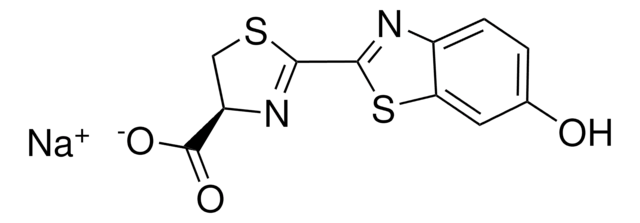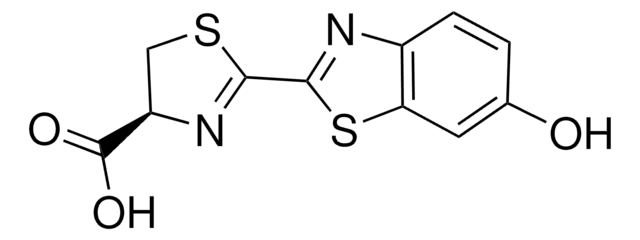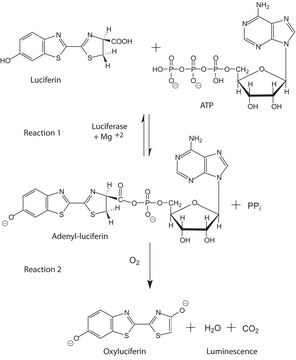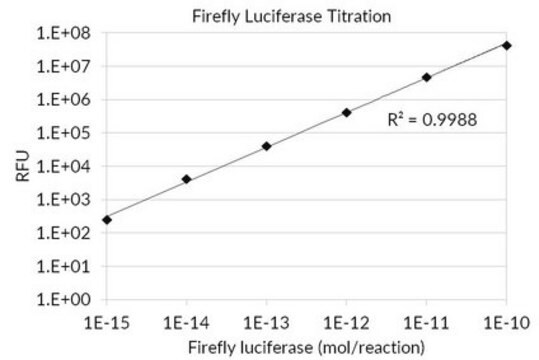SRE0045
Luciferase from Photinus pyralis (firefly)
recombinant, expressed in E. coli, lyophilized powder, ≥10×1010 units/mg protein
Sinônimo(s):
Luciferase firefly
About This Item
Produtos recomendados
recombinante
expressed in E. coli
Nível de qualidade
forma
lyophilized powder
atividade específica
≥10×1010 units/mg protein
peso molecular
62 kDa
aplicação(ões)
diagnostic assay manufacturing
temperatura de armazenamento
−20°C
Procurando produtos similares? Visita Guia de comparação de produtos
Aplicação
Ações bioquímicas/fisiológicas
Definição da unidade
Unit Definition Conversion Factor: There are approximately 9000 Relative Light Units (RLU) per one traditional Light Unit that uses a peak height equivalent to 0.02 μCi of 14C in a PPO/POPOP cocktail.
forma física
Nota de preparo
After reconstitution, the enzyme solutions can kept at 4-8 °C for up to 2 days or frozen in working aliquots at -20°C for at least one month. Repeated freezing and thawing is not recommended.
substrato
Palavra indicadora
Danger
Frases de perigo
Declarações de precaução
Classificações de perigo
Eye Dam. 1 - Resp. Sens. 1
Código de classe de armazenamento
11 - Combustible Solids
Classe de risco de água (WGK)
WGK 3
Ponto de fulgor (°F)
Not applicable
Ponto de fulgor (°C)
Not applicable
Certificados de análise (COA)
Busque Certificados de análise (COA) digitando o Número do Lote do produto. Os números de lote e remessa podem ser encontrados no rótulo de um produto após a palavra “Lot” ou “Batch”.
Já possui este produto?
Encontre a documentação dos produtos que você adquiriu recentemente na biblioteca de documentos.
Artigos
Firefly luciferase is a widely used bioluminescent reporter for studying gene regulation and function. It is a very sensitive genetic reporter due to the absence of endogenous luciferase activity in mammalian cells or tissues.
Nossa equipe de cientistas tem experiência em todas as áreas de pesquisa, incluindo Life Sciences, ciência de materiais, síntese química, cromatografia, química analítica e muitas outras.
Entre em contato com a assistência técnica










